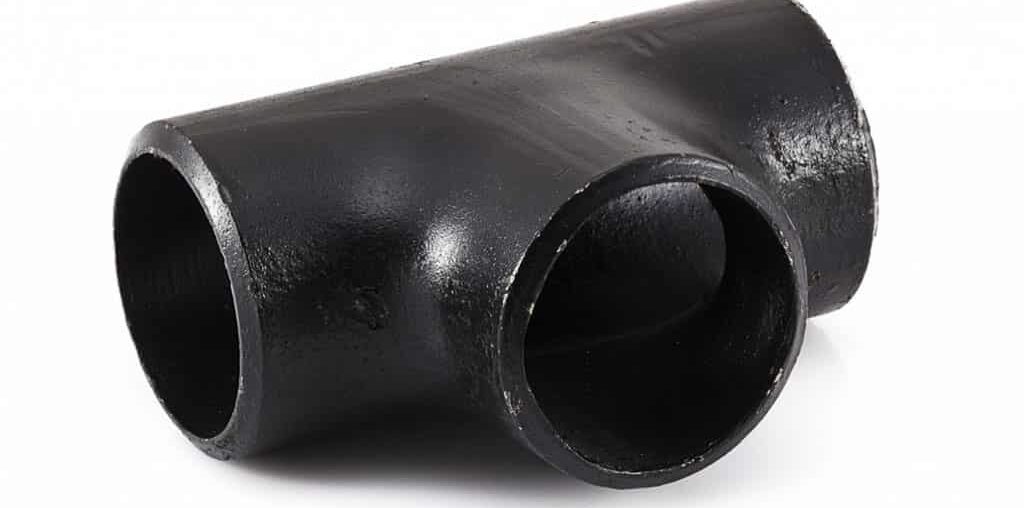Water infrastructure is essential in industries ranging from oil and gas to water treatment and food processing. These systems rely on a variety of materials to ensure their efficiency; a key feature of these systems is carbon steel buttweld fittings. As an integral part of any piping network, these fittings help to carry water safely and effectively under pressure and provide the strength and stability needed for the system to work properly We will explore the role of fittings, their benefits and why they are preferred by many projects in many industries.
What Are Carbon Steel Buttweld Fittings?
Carbon steel buttweld fittings are piping components that are used to connect two sections of pipe. These fittings are welded directly to the pipe ends, hence the term “buttweld.” Made from carbon steel, they offer a strong, durable, and cost-effective solution for various piping systems. The process of welding the fittings to the pipes provides a seamless, leak-proof connection that is ideal for high-pressure applications.
These fittings come in various shapes and sizes to accommodate different piping needs, including elbows, tees, reducers, and caps. Depending on the specific requirements of the fluid transport system, carbon steel buttweld fittings can be customized to meet unique demands, such as high-temperature tolerance or resistance to corrosive fluids.
Importance of Carbon Steel Buttweld Fittings in Fluid Transport Systems
-
Durability and Strength
Strength and durability are among the most significant factors that make people choose carbon steel buttweld fittings for fluid transport systems. Carbon steel as a material is relatively strong and can be used in applications where conditions are unfavourable for material endurance, including high pressures, temperature variations and corrosive fluids. These fittings are intended to withstand the pressures associated with the movement of fluids, so they are well-suited for long-term use in high-stress conditions.
-
Seamless Connections
The buttweld fitting design ensures that the pipes are welded at the ends, providing a smooth, continuous connection. This is essential for preventing leaks and ensuring the integrity of the system. Unlike other types of fittings, such as threaded or flanged, buttweld fittings eliminate the potential for weak points at the connection. The welding process creates a bond that is as strong as the pipes themselves, minimizing the risk of failure over time.
-
Cost-Effectiveness
Carbon steel is one of the cheapest materials that can be used in industrial piping systems. Stainless steel or other high-performance materials are more expensive than carbon steel, but the latter has the same strength and reliability. This makes carbon steel buttweld fittings a good option for companies that require both, performance and cost control. While the initial cost may be lower, the long lifespan of these fittings also contributes to cost savings over time.
-
Corrosion Resistance
Carbon steel is not as self-healing as stainless steel but can work in a variety of environments and may be coated or given special finishes. For instance, galvanized or coated carbon steel buttweld fittings offer enhanced resistance to rust and corrosion, making them suitable for outdoor or humid conditions. Additionally, carbon steel fittings are often used in systems where corrosion is less of a concern or where the fluid being transported is not particularly corrosive.
-
Versatility
Another key advantage of carbon steel buttweld fittings is their versatility. These fittings are available in a variety of sizes and configurations, allowing them to be used in numerous applications, from water treatment plants to industrial factories. Whether the system requires large-diameter pipes or complex, customized designs, carbon steel buttweld fittings can be adapted to meet the specific needs of any fluid transport system.
-
Ease of Maintenance
Although carbon steel is a durable material, maintenance is still an important consideration in ensuring the continued success of fluid transport systems. Fortunately, carbon steel buttweld fittings are relatively easy to maintain. The seamless nature of the welds means there are fewer crevices where dirt or other particles can collect, which can reduce the likelihood of blockages or build-up that might affect the system’s performance. Regular inspections and minor repairs help maintain the system’s reliability, ensuring that it operates smoothly for years.
Applications in Various Industries
The role of carbon steel buttweld fittings extends across a wide range of industries, including:
- Oil and Gas: Carbon steel buttweld fittings are used extensively in the oil and gas industry for the transport of crude oil, natural gas, and refined products. Their ability to withstand high pressures and harsh environments makes them a staple in pipelines.
- Water Treatment: These fittings are also important in water treatment plants to move water, effluent and chemicals around the plant. The treated carbon steel offers protection against corrosion, making the system durable.
- Food and Beverage Processing: In food processing, hygiene and safety are paramount. Carbon steel buttweld fittings, especially those with food-grade coatings, are used to transport ingredients and liquids, ensuring that the flow remains uninterrupted.
- Power Generation: In power plants, these fittings are used for the transport of steam, water, and other fluids critical to energy production. Carbon steel’s ability to handle high-temperature systems is key to ensuring the plant’s operational efficiency.
Conclusion
Carbon steel buttweld fittings are very important in the system of fluid transportation since they are strong, durable and reliable. Due to their flexibility, integration and affordable prices, they are suitable for use in several industries. These fittings are applied in oil and gas, water treatment, and food processing industries to ensure that the flow of fluids is achieved safely and effectively, thus enhancing the functionality of key systems. This paper aims to provide an overview of the purpose and advantages of these fittings so that when a company is designing or managing a fluid transportation system, it will be able to make the right decisions.


